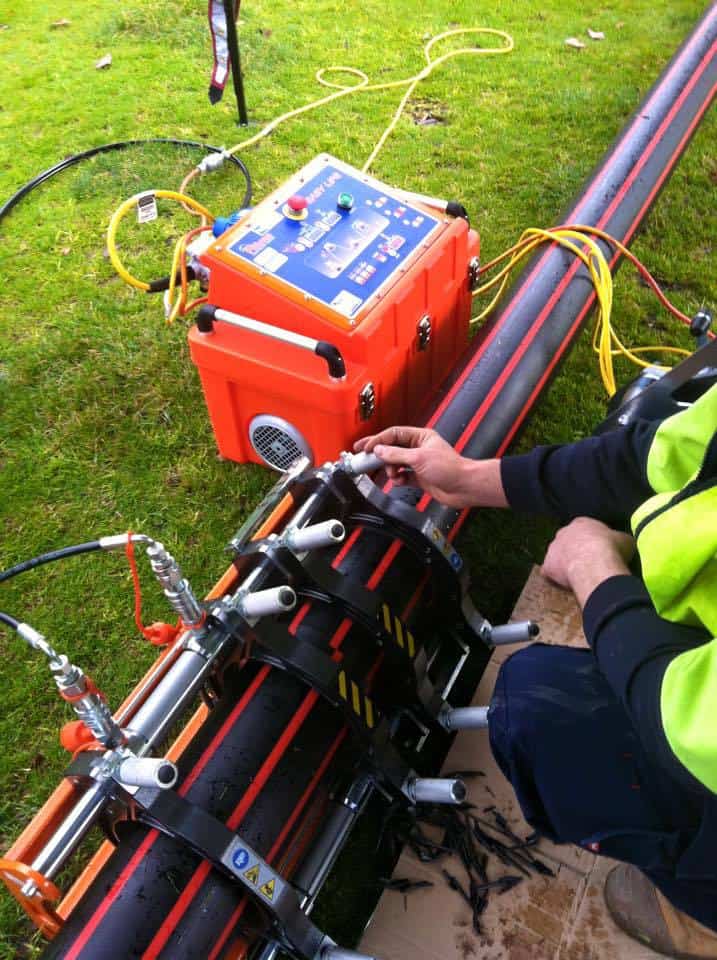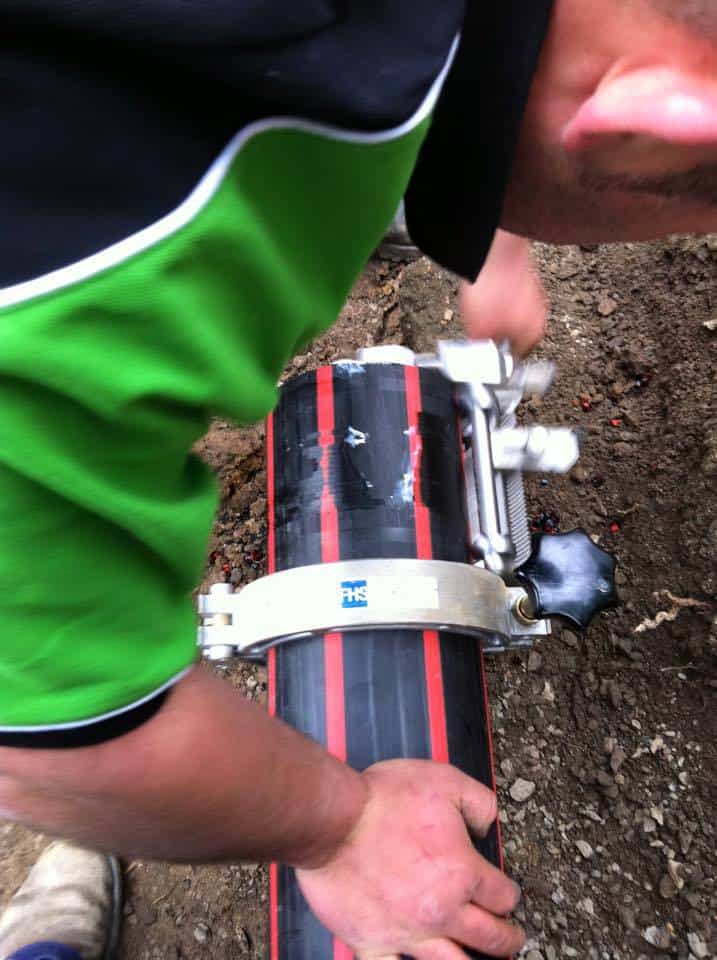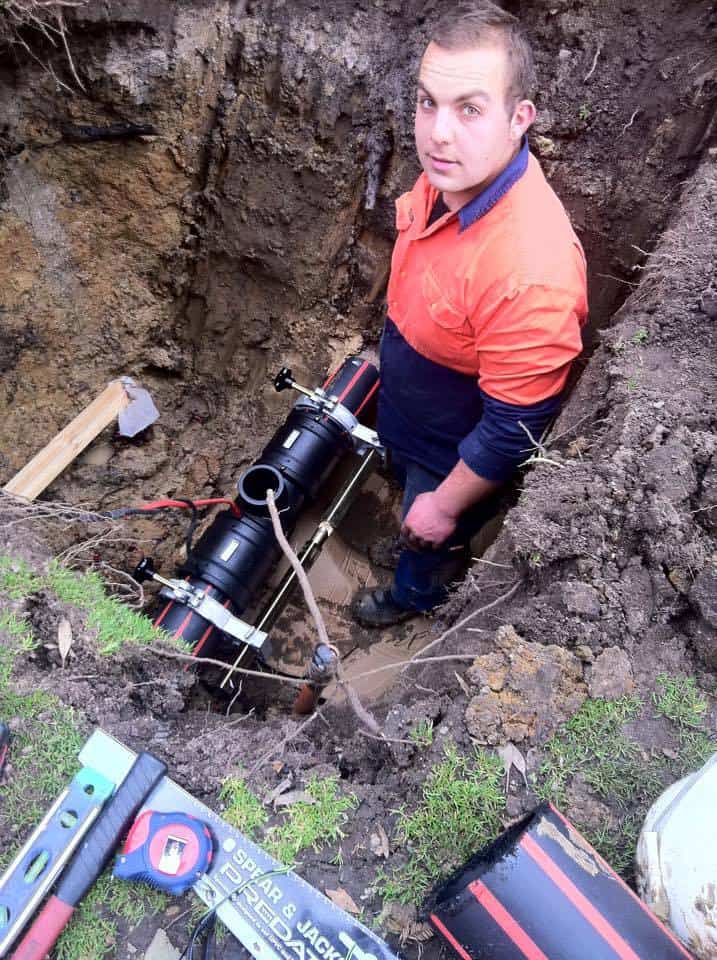Electrofusion: Getting it right
The process of joining polyethylene pipes via electrofusion fittings and procedures has caused problems across the industry and many failures have been accredited to plumbers. Justin Felix reports on why errors are being made and ways to rectify them to ensure a bright future for the joining method in Australia.
Like most technologies that filter their way through to Australia, electrofusion of polyethylene pipes is not new. In fact, it has been used successfully across Europe for decades. While some innovations are adopted and put into practice without problems, others encounter issues for various reasons. New technology is often hampered by teething problems or bugs, which is understandable, while at others times, problems are caused due to user error. Unfortunately, in the case of electrofusion in Australia, the latter has been the case.
When installed correctly, electrofusion is an efficient and effective joining method for developing polyethylene pipe systems to supply liquids and gases. The joint itself takes place between two pipe ends and the electrofusion fitting surrounding both.

The polyethylene pipes to be joined are cleaned, inserted into the electrofusion fitting with a temporary clamp and a voltage is applied for a fixed time depending on the fitting in use. The built-in heater coils then melt the inside of the fitting and the outside of the pipe wall, which weld together to produce a very strong homogeneous joint. The assembly is then left to cool for a specified time. When done so correctly, the joint is safe and secure.
FAILURES
Since its introduction in Australia, the rate of failures per install is not all that high, though you only need an occasional failure to have an expensive problem on your hands. Of those that have failed, a large percentage have been linked to poor installation practices that could have been avoided had the contractor undertaken the relevant training and followed the manufacturer’s installation procedures or guidelines. In a day and age when clients want the job finished yesterday, it’s tempting to take shortcuts or miss one of the small yet vital steps that would ensure a successful installation.
Bob Le Hunt of Le Hunt Consulting Engineers who consults on electrofusion projects, explains that the consequences of failure can not only be costly but dangerous too.
“Sometimes these things will fail almost instantly but unfortunately, they usually fail after concrete has been poured over them. Occasionally an installer encounters a leak during a pressure test before covering the pipes up. In this instance they will fix it immediately. At other times, there won’t be a leak and all seems in proper working order. They backfill it and it might fail 12 months down the track. As you can appreciate, it becomes a big job to shut everything down, dig it up and replace the pipes and fittings. If you’re working with gas, the consequences are taken to another level. It could cause injury or even death to people.
“We went through all of our records over the past 30 years to try and come up with a histogram that depicted the major causes of problems with electrofusion and we got to about 95% of the causes that we had that we put down to installation. Some were put down to faulty pipes, fittings and machinery; however, there was an overwhelming and clear showing for installer error,” Bob explains.
“A major problem stems from contractors who have worked with smaller profile pipes who then jump onto projects that involve much bigger pipes up to 100mm. They apply all of the same procedures without taking into account the fact that everything needs to be upsized and clamps and calipers become a major necessity to ensure everything is aligned prior to making the join. Low pressures become high and the whole game changes, as should the procedures involved. Unfortunately, in many cases, it does not.”
When there is a fire main involved it’s a matter of regulation that a statutory fire test is conducted by a certified tester. They test to around 1750kPa as a rule and everything has to hold for a period of time without leaking. This isn’t the case in other situations where only minor testing such as an air test or low head water test is required.
Another major problem is a lack of training being undertaken by contractors prior to accepting jobs. To put it bluntly, if you do not have the knowledge, either obtain it via a certified course or decline the work.
“There are training programs available and there have been national accreditation programs since 1997. The problem is – people don’t want to send their staff to training. Typical excuses include, ‘it costs too much, we’re busy, our blokes are out and we can’t take them off the job’. The other major resistance towards training is the negative attitude directed at staff that obtain training and then leave to join someone else or start their own business,” Bob says.
“To them I say, ‘it’s a circle. You train someone and he leaves you; however you also employ people who have been trained elsewhere’. It’s swings and roundabouts.
“Times have changed and the old days when plumbing inspectors went from job to job to conduct auditing work on behalf of various water boards has gone. They were the fall back in a lot of instances, no doubt saving a large number of plumbers from making costly mistakes. Now the onus is on the plumbers themselves to ensure all work and tests are satisfactory. The best way to do this is to keep up with regulations and Standards, as well as continuing professional development (CPD).”
It isn’t all bad news though. Some commonalities exist across the board that if taken into account and rectified, can see the tide pushing in the opposite direction when it comes to electrofusion installations on home soil.
DOING IT RIGHT
Contractors who have obtained the proper training and continually follow the manufacturer’s installation guidelines have managed to successfully complete projects and picked up more jobs as a result of achieving a good reputation.
One such contractor is Ecoplumb from Melbourne. Over the years the team has successfully completed electrofusion welded jobs for the Melbourne Zoo, Rinoldi Pasta fire service and the Melbourne Cemetery fire mains among plenty more of similar scale.
Managing Director Peter Monahan suggests there are a lot of one percenters that need to be ticked off in order to ensure a safe and sound connection is made.

Peter’s Top Tips:
– Get yourself and your team trained up in electrofusion through an accredited training company.
– Always follow the procedures provided by the suppliers, especially in regards to cool down times.
– Select your pipe depth into the fitting plus 50mm and then mark it back so you know the pipe is home.
– Ensure you know your pipe’s outside diameter (SDR) and the wall thickness as this will determine which electrofusion fitting can safely be welded.
– Cover the end of the pipe so the ambient air doesn’t blow through the pipe while the weld is getting done.
– Ensure a supervisor is available to evaluate jointing and testing procedures on a daily basis.
– If you peel the pipe too early before the weld is done, the end of the pipe will reoxidise and the fusion weld won’t be as good.
– Keep the rain off the welds by covering the area where you are welding.
– When using pipes that come off a coil, the pipe isn’t perfectly round. Calipers bring them back to a perfect roundness. This is important to ensure the heat from the weld is spread evenly around the pipe rather than causing a blowout.
– Make sure your blades are nice and sharp when peeling a pipe – and do it twice to ensure it has been done correctly. Also, use a specifically manufactured electrofusion pipe scraping tool or a metal blade paint scraper. Do not use a metal file or wood rasp.
– Be aware that pipes can shrink after being placed in a bore – particularly after fluctuations in weather.
– It is extremely important to get your machines calibrated every 12 months.
– Always buy reputable brands from companies you know and trust as they will provide support and a good back-up service.
In order for plumbers to maintain the work and avoid seeing these electrofusion jobs going to civil contractors and the like, it is important for them to undertake the necessary training and avoid any temptations to take short cuts along the way. The future is in your hands; make sure you’re equipped to tackle it.

